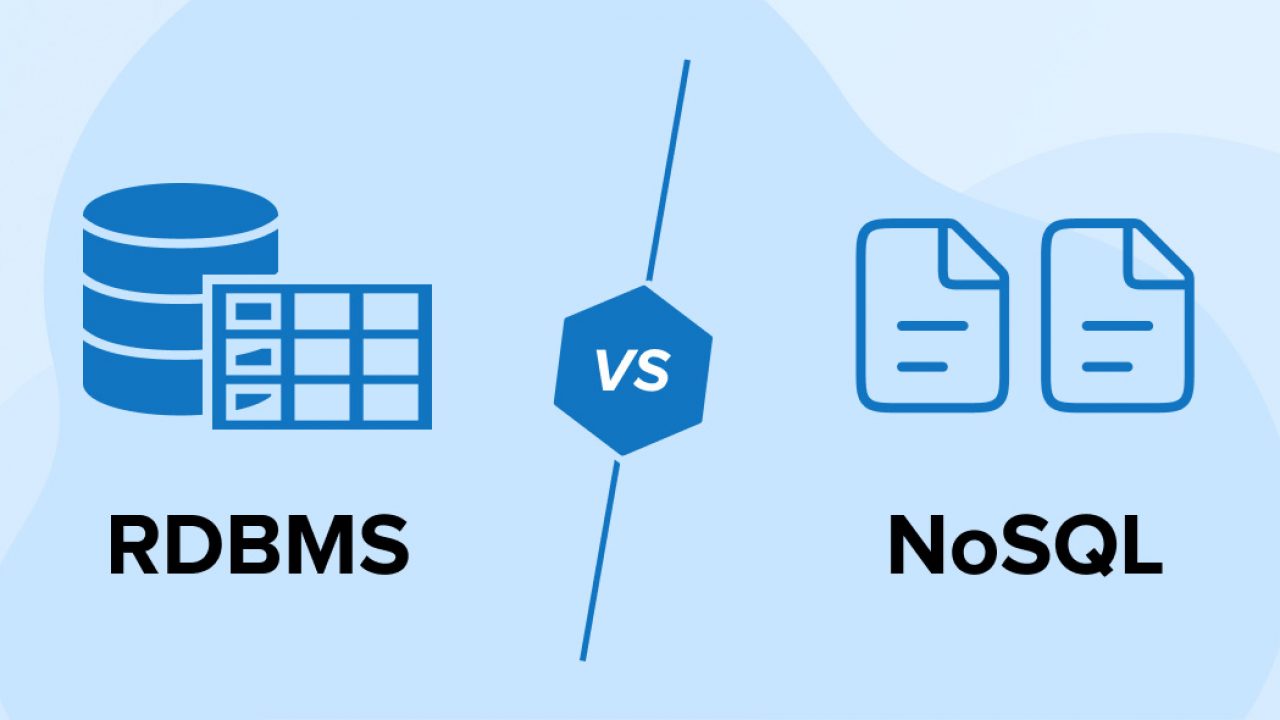Relational Databases vs NoSQL Document Databases
DATE:
2024-06-05
READING TIME:
5 min

AUTHOR
Pasquale Celani
Table of contents
Introduction to Relational Databases
Introduction to NoSQL Document Databases
Key Differences
Choosing the Right Database
Conclusion
Introduction to Relational Databases
What is a Relational Database? Relational databases store data in a structured format using tables, rows, and columns. Each table, representing an entity, has a predefined schema, and relationships between tables are established through foreign keys. This structured approach ensures data integrity and consistency. The Key Features of Relational Databases Relational databases are schema-based, which means they organize data according to a fixed schema that enforces consistency across the database. They support ACID transactions, ensuring that all database transactions are processed reliably. These databases are designed to handle complex queries using Structured Query Language (SQL), providing robust data manipulation and retrieval capabilities. They also emphasize data integrity through the use of strong data types, constraints, and relational integrity rules. Additionally, the process of normalization reduces data redundancy by dividing data into related tables, further enhancing data integrity.
The Use Cases for Relational Databases are ideal for applications with complex business logic and relationships, such as enterprise resource planning (ERP) systems. They are particularly suitable for transactional systems that require reliable transactions, like banking and e-commerce platforms. Moreover, their structured nature makes them effective for data analysis and reporting, supporting analytical queries that can extract meaningful insights from structured data.
1 Introduction to Relational Databases
Introduction to NoSQL Document Databases
What is a NoSQL Document Database? NoSQL document databases store data in a flexible, semi-structured format using documents, typically in JSON or BSON format. Each document contains a set of key-value pairs, and documents within a collection can have different structures. The Key Features of NoSQL Document Databases offer schema flexibility, allowing for dynamic schemas that enable easy modification of data structures as application requirements evolve. They are designed for horizontal scalability, making it straightforward to distribute data across multiple servers, which enhances performance and availability. These databases are optimized for high-speed read and write operations, handling large volumes of data efficiently. They support powerful ad hoc queries and indexing capabilities, often using a more flexible query language than SQL. Furthermore, they allow for hierarchical data storage within documents, which reduces the need for complex joins by embedding related data directly within documents.
The Use Cases for NoSQL document databases are suitable for projects with evolving requirements where the schema may change frequently, such as agile development environments. They excel in handling large volumes of unstructured or semi-structured data, making them ideal for big data applications. These databases are perfect for content management systems, catalogs, and user profiles where data structures are varied and hierarchical.
2 Introduction to NoSQL Document Databases
Key Differences
Schema and Data Integrity: Relational databases enforce a strict schema, ensuring data integrity and consistency, which means that schema changes require careful planning and migrations. In contrast, NoSQL document databases offer schema-less data storage, allowing for flexibility but potentially leading to inconsistencies due to the lack of enforced structure.
Query Language: Relational databases use SQL, a powerful and standardized query language with extensive capabilities for manipulating and retrieving data. NoSQL document databases, on the other hand, often use a query language based on JSON or a similar format, which is intuitive and flexible but less standardized than SQL.
Transactions and Concurrency: Relational databases fully support ACID transactions, making them reliable for complex transactional operations where consistency is critical. NoSQL document databases primarily support ACID transactions at the document level, and while they can handle multi-document transactions, these operations can be less performant and more complex.
Scalability: Relational databases typically scale vertically with more powerful hardware, though horizontal scaling is possible but more complex. Conversely, NoSQL document databases are designed for horizontal scaling, making it easy to distribute data across multiple servers and handle increased loads efficiently.
Performance: Relational databases are optimized for complex queries and ensuring data integrity but can be slower when dealing with massive volumes of unstructured data. NoSQL document databases excel in performance for read/write operations on large volumes of unstructured data, particularly due to their flexible schema and distributed nature.
3 Key Differences
Choosing the Right Database

Relational databases should be chosen when data integrity and consistency are critical, such as in financial systems. They are preferable when the application requires complex queries and transactions, leveraging the robust capabilities of SQL, and are ideal for projects needing extensive relational data modeling and normalization. Relational databases are typically supported by a comprehensive suite of tools for database administration, including backup and recovery solutions, performance tuning tools, and monitoring systems. They often run on enterprise-grade hardware with high-performance drives like SSDs to ensure fast data retrieval and robust RAID configurations for data redundancy. Additionally, these databases benefit from strong community support and extensive documentation, making it easier for developers and administrators to troubleshoot issues and optimize performance. Conversely, NoSQL document databases are better suited for applications with evolving or flexible schemas, where the structure of the data may change frequently. They excel in scenarios involving large volumes of unstructured or semi-structured data, such as big data applications, and are highly suitable for projects requiring high scalability and performance for read/write operations, especially in distributed environments. NoSQL databases are designed to scale horizontally, allowing them to distribute data across multiple servers or clusters, which enhances their ability to handle large-scale data operations efficiently. They often integrate seamlessly with modern development frameworks and cloud environments, providing built-in support for distributed storage and automatic sharding. Furthermore, NoSQL databases come with a variety of tools for data analysis, real-time processing, and integration with big data platforms. Their support ecosystems include both open-source communities and enterprise-level support options, offering extensive resources for optimization and troubleshooting. The flexibility of document databases makes them compatible with diverse storage solutions, ranging from traditional HDDs to cloud-based storage systems, ensuring they can meet the performance and scalability demands of contemporary applications.
4 Choosing the Right Database
Conclusion
Both relational databases and NoSQL document databases offer unique strengths tailored to different types of applications. Relational databases excel in scenarios demanding data integrity, complex queries, and robust transaction support. In contrast, NoSQL document databases shine in environments where flexibility, scalability, and performance for large-scale data operations are essential. Understanding the specific needs of your project is crucial in selecting the right database technology.
5 Conclusion
